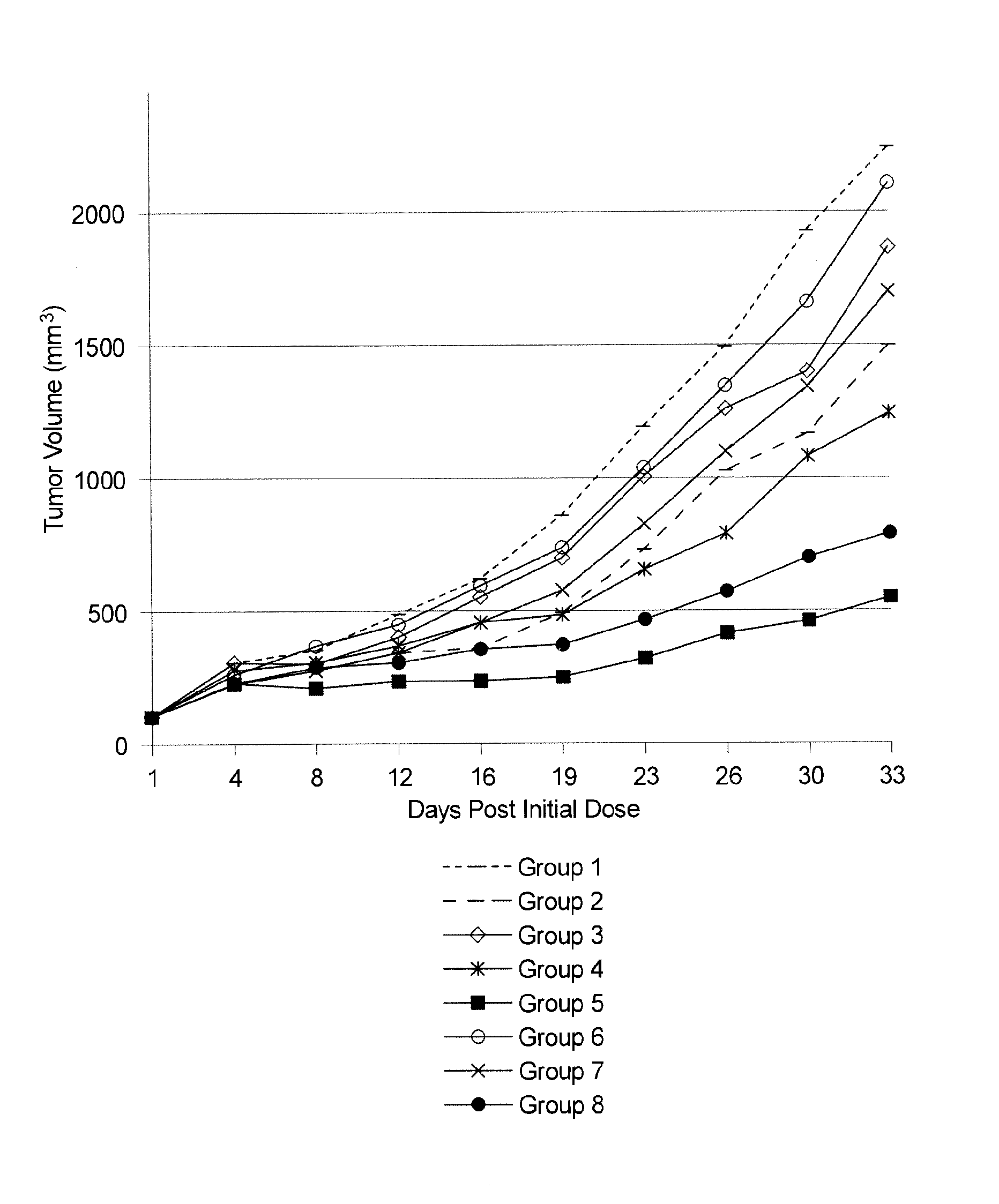Extracellular targeted drug conjugates
a drug conjugate and extracellular technology, applied in the direction of antibody medical ingredients, drug compositions, peptides, etc., can solve problems such as difficulty in finding
- Summary
- Abstract
- Description
- Claims
- Application Information
AI Technical Summary
Benefits of technology
Problems solved by technology
Method used
Image
Examples
example 1
Synthesis of Linker-Ready Therapeutic Agents
[0151]This example describes synthetic protocols for attaching a steroid drug to a linker to produce “linker-ready” agents that can be readily attached to an antibody, as described herein. The linker-ready agents can also be used as controls in studies to investigate activity of potential EDC breakdown products, as may be generated by EDC degradation by proteases in vivo. The linker-ready reagents described in this example include PEG24-CEN09-106, PEG24-CEN09-107, PEG24-CEN10-110 and PEG24-CEN-319.
[0152]PEG24-CEN09-106 is a scillarenin based linker-ready agent that comprises a steroid, a linker and an active maleimide group. The general synthetic steps for the preparation of PEG24-CEN09-106 are as follows.
2,3-di-O-benzoyl-4-azido-4-deoxy-L-xylopyranoside-1-trichloroacetimidate
[0153]1-Allyl-2,3-di-O-benzoyl-4-azido-4-deoxy-L-ribopyranoside (11.9 g, 28.1 mmol) was dissolved in dichloromethane / methanol (80 mL, 90:10) under argon and PdCl2 (0....
example 2
M53 Antibody; Epitope Mapping; and Conjugation to Linker-Ready Agent
[0183]The M53 antibody (described in Shimamura et al. J. Clinical Oncology 21(4) 659-667 (2003)) and the control 4F12 antibody are used in these examples. Antibody M53 recognizes and binds human dysadherin; amino acid sequence shown in SEQ ID NO. 1), and control antibody 4F12 recognizes and binds a peptide found within SEQ ID NO. 1 but not to dysadherin as expressed on the surface of human cells. Both antibodies described are monoclonal of mouse origin and of the IgG1 kappa isotype form.
[0184]Overlapping peptide sequences of 15-17 amino acids in length (SEQ ID NO. 2 through SEQ ID NO. 16; termed CENP001, and CENP004-CENP017, respectively) were synthesized and correspond to positions 24 through 145 of the extracellular domain (residues 22-145 of SEQ ID NO: 1) of dysadherin. Each peptide contained a C-terminal cysteine to facilitate conjugation to maleimide activated BSA (cat. number: 77116, Pierce Biotechnology, Rock...
example 3
In Vitro Cytotoxicity Assays
[0194]This example demonstrates that illustrative compounds of the invention are useful at targeting and killing tumor cells in vitro. Antibody M53 (specific for dysadherin expressed on human cell lines H460, A549, A375, PANC1, and H929 [but not H520]) and antibody 4F12 (specific for a peptide sequence within the dysadherin extracellar portion but does not recognize dysadherin expressed on human cell lines) were used to produce drug conjugates as described in Example 2. EDCs were constructed using linker-ready agents PEG24-CEN09-106, PEG24-CEN09-107, PEG24-CEN10-110 and PEG24-CEN-319. As described in Example 1, linker-ready agent PEG24-CEN-319 contain digitoxigenin while the others contain scillarenin. Linker-ready agents PEG24-CEN09-106, PEG24-CEN09-107, PEG24-CEN10-110 all use different linkers. Specifically, PEG24-CEN09-106 and PEG24-CEN09-107 have different sugars in the linker, while PEG24-CEN10-110 contains a longer linker that includes a primary am...
PUM
| Property | Measurement | Unit |
|---|---|---|
| Mass | aaaaa | aaaaa |
| Mass | aaaaa | aaaaa |
| Dimensionless property | aaaaa | aaaaa |
Abstract
Description
Claims
Application Information
 Login to View More
Login to View More - R&D Engineer
- R&D Manager
- IP Professional
- Industry Leading Data Capabilities
- Powerful AI technology
- Patent DNA Extraction
Browse by: Latest US Patents, China's latest patents, Technical Efficacy Thesaurus, Application Domain, Technology Topic, Popular Technical Reports.
© 2024 PatSnap. All rights reserved.Legal|Privacy policy|Modern Slavery Act Transparency Statement|Sitemap|About US| Contact US: help@patsnap.com










